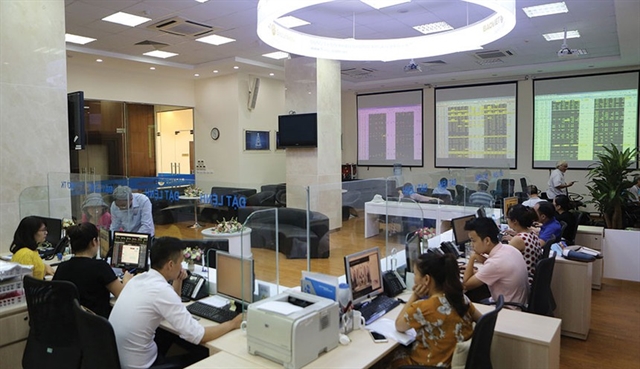[ad_1]

HÀ NỘI — Trading liquidity is key to luring foreign capital into the Vietnamese stock market in 2020 when the local equity market is being weighed down by negative ratings and global developments.
Việt Nam’s benchmark VN-Index rose a total of 7.7 per cent during 2019 to end the year at 960.99 points. The total market value was up 10.7 per cent on-year at nearly VNĐ4.38 quadrillion (US$188.7 billion), equal to 79.2 per cent of Việt Nam’s total GDP in 2018 and 72.6 per cent of 2019 GDP.
Foreign investors net-bought a total of VNĐ21.25 trillion worth of stocks and bonds in 2019, raising the total value of foreign investment up 11.6 per cent on-year to $36.4 billion.
According to investment firm Dragon Capital chairman Dominic Scriven, the Vietnamese securities market still performed below investors’ expectations in 2019 and some factors could discourage foreign investors from pouring capital into the market.
The VN-Index grew at a slower pace than the average of other frontier markets (14 per cent), emerging markets (15 per cent) and developed markets (25 per cent).
The total value of the securities market accounted for a lower portion of the total GDP after the GDP calculation method was revised. The previous rate was 81.1 per cent.
Foreign investors cut their net buying to $280 million in 2019 from $1.8 billion in 2018 because of negative developments in global markets. In addition, ratings agency Moody’s had classified Việt Nam’s creditability as “negative”.
But the subjective issue is the market’s trading liquidity, which fell 29 per cent on-year to average VNĐ4.7 trillion each day in 2019. The strong rise in liquidity last year was attributed partly to the growth of foreign capital inflow.
Investment firm VinaCapital vice chairman Terence F. Mahony said trading liquidity was the most important factor making sure the securities market operates properly.
According to data analysing firm FiinGroup, Việt Nam’s stock market in early 2020 “will improve significantly” as foreign capital is expected to come back based on the economy’s stable macro condition and the attractiveness of the stock market valuation. In addition, the size of exchange traded funds (ETFs) in Việt Nam tends to increase in 2020.
“International portfolio investment funds as well as speculative foreign cash flows could join sooner to bet on the prospect of Việt Nam’s market upgrading to emerging market in the future,” FiinGroup said in a report.
The securities market is a risky channel compared to others. But the market is expected to become more attractive because interest rates in general and deposit interest rates in particular may continue decreasing in accordance with the policies of the Government, FiinGroup said.
The rates “can be reduced by 50 basis points or more” while stocks are becoming more attractive.
The price-to-earnings per share (P/E) ratio has reached the level of 15.7x – which was seen when the VN-Index was at 700 points before a strong rebound in mid-2017 boosted the index to its all-time peak of 1,204.33 points in early April 2018.
In addition, margin money supply will grow higher, especially from new securities companies that join the market. In 2019, the total margin lending on the stock market increased by VNĐ7.7 trillion, most of which came from securities companies owned by or funded by South Korean investors.
In 2020, more quality goods will be provided to meet the market demand. Banks are required to list shares on the stock market in 2020 while large State-owned enterprises will launch IPOs after a long-awaited period such as Mobifone and Satra.
In addition, Scriven proposed the Ministry of Finance and the State Securities Commission develop instructions to implement the amended Law on Securities while the State Bank of Vietnam should meet securities firms and investment funds to remove barriers for the development of institutional investors.
He also proposed market regulators proceed with the launch of non-voting depository receipt (NVDR) to help foreign investors increase their stakes in local firms and accept new electronic settlement methods. — VNS
[ad_2]
Source link
